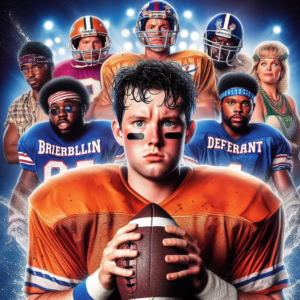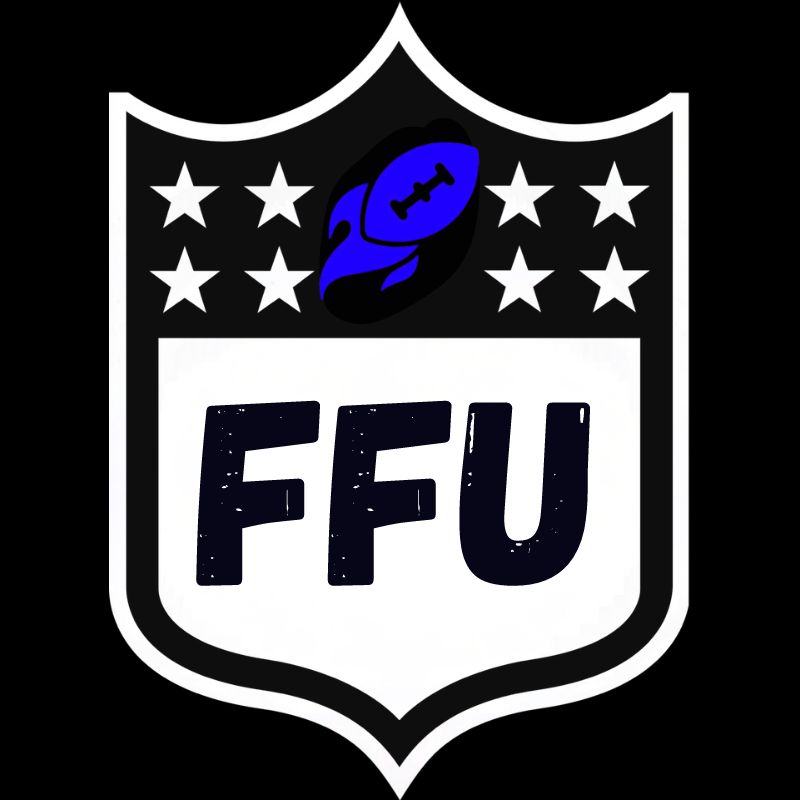For the general public, a standard fantasy football league suffices. If you’re reading this article, you may have grown weary of normal leagues and would like to try something new. Crash Course, a Fantasy Football Universe series, delves into unique formats. So, let’s start with Devy Dynamo: Cultivating Stars in Devy Leagues.

How Does it Work?
Devy leagues run like a standard dynasty fantasy football league, however, the catch is that teams are allowed to draft a certain number of prospects too. The number of prospects drafted is dependent on commissioner rules. One league can have only one or two prospects drafted, however, others can have ten or more prospects drafted. I say prospects because some Devy leagues even allow high school prospects to be drafted. This means if you knew about Caleb Williams in high school then yes he could have been on your team as an incoming college freshman if your league allowed high school prospects to be drafted. Much can change through a player’s collegiate years, so a standard Devy league only allows teams to draft collegiate prospects.
How is it different?
A Devy league is different from your typical dynasty league because teams also draft prospects, typically only collegiate prospects. A team’s Devy roster is essentially extra taxi spots. Like taxi spots in dynasty leagues, your Devy roster does not accumulate points for your fantasy team. Rather your Devy team is there and once those prospects are drafted to the NFL they are then eligible to move to your pro rosters bench, or starting lineup, or you can keep them on your actual taxi roster.
How does the Draft work?
The startup draft typically has two parts. First, teams draft their pro rosters then once that draft has concluded teams draft their Devy prospects. The majority of leagues will have their Devy draft be the inverse order of their pro draft. This means the team that drafted number one overall during the pro roster would have the final pick for the Devy draft. Every league is different, and some do allow you to draft your Devy prospects during your pro draft. However, I would say standard Devy leagues host a separate Devy draft after a pro draft. This allows teams to build out a pro roster and then try to fill potential positional needs with prospects.
A look at the Rosters
Rosters are open to league preference, however, a standard Devy roster consists of at least five Devy players (prospects). Some leagues allow for more prospects and some require less. Devy leagues are an extension of dynasty leagues, so they still hold annual rookie drafts. Many Devy prospects do not get drafted by league members, however, they do get drafted by the NFL. Regardless, the pro rosters and Devy roster’s size ultimately comes down to league preference.
How does the Waiver Wire work?
Waivers on the pro side would act as normal. On the other hand, Devy waivers can be a thing. Some leagues do not allow players to add or drop Devy players just to avoid having to keep up with Devy rosters for players that do not score any points for your actual fantasy team. In Devy leagues that I run, I allow members to have a total of five Devy waiver adds. This means throughout the season I allow all members to add or drop five Devy players at any given time. Once a player has used all five of their Devy moves they can no longer add or drop Devy players until the new season begins. This keeps players on their toes with identifying which prospects begin their rise during the season, or which prospects end up not being as productive as one may have thought.
How the scoring works
Again, scoring is not impacted by the league and can be done in any manner of your choosing. There is no wrong or right answer here, it’s all up to you and your league mates. Devy players do not put up any points. If one is looking for their college players to score points and then go to their NFL teams once drafted then they are looking for Campus to Canton leagues. One can find our Campus to Canton crash course here.
The Consensus Strategy
- Draft Prospects of Need Based on Position: The majority of the time once the Devy draft begins most will try to fill out the weak links of their pro rosters. Maybe a manager is weak at running back, so during the Devy draft, they will draft future running back prospects. This strategy allows a team to build out their roster for future years eventually getting the strength they want from all positions.
- Draft Potential Pro Prospects for the Upcoming Year: In Devy drafts, one can draft any prospect, but some may not want to hold onto players for a few years. So, with this logic, they try to draft players in the upcoming draft class. This allows them to get fresh prospects every year because the majority of their Devy players will go pro in the following draft.
- Draft Players from Colleges that Produce Talent: This seems like a no-brainer. The truth is every Devy player drafted is being drafted off the potential of becoming a future star. In reality, one college season can change the trajectory of any player. Yes, it is wise to get players from schools known to produce NFL talent, but that does not always mean they are the best prospect drafted.
My Strategy
- Draft Devy Wide Receivers Early: No prospect is a sure thing, however, more times than not the top wide receivers’ prospects are hits. This means they get drafted and make an immediate impact on your fantasy team. At least that is the way the NFL seems to be right now. With this logic, the wide receivers probably hold the most value in terms of being the closest to guaranteed production at the NFL level.
- Draft Incoming Freshman: The hype train is real, so the freshman prospects have that hype train behind them. Again, no prospect is a sure thing until we see them at the NFL level, however, if you hit on a freshman prospect their value can skyrocket as their predicted draft capital may rise.
- Draft for Trade Value: One has to think because in Devy leagues teams already have prospects on their rosters that the annual rookie drafts will be slim. So, essentially Devy players become draft picks heading into new seasons. This means one can trade their incoming prospects for proven veterans. For example, trading wide receiver Luther Burden or running back Quinshon Judkins would be like trading a top-five 2025 draft pick. In dynasty leagues that holds heavy value, heavier value, if you consider the fact that the team acquiring said players is not hoping for one of those players to be there at their draft pick. In every league the mindset should be to win now, a Devy league is no different. Draft players based on value and trade them to try to win now.
- DO NOT SCOUT THE HELMET, SCOUT THE PLAYER: This is a golden rule when I scout prospects. It is easy to watch the players from Power-4 conferences, however, just because they are on television does not mean they are the top prospects. The college football landscape has a plethora of talent outside of the Power-4 conferences. Do not miss that talent because you only see certain players from the “bigger” programs.
In Closing
This format is one of my favorites. Why? It does not require knowing which prospects will have big weeks at the college level, but it does require one to pay attention to the college football landscape. I have found that entering Devy leagues has helped me better prepare for my rookie drafts because I am aware of the “next up.” This type of league is not for everybody, some do not look at the rookie class until the NFL combine rolls around. That is okay. For me, when it comes to playing in dynasty leagues, or redraft for that matter, I always look to gain an edge over my competition. Devy Leagues do that for me.
Don’t forget to check out the rest of the Crash Course Series. Take a look at the 2024 Fantasy Football Universe Devy Dynamo Leagues. It is hosted on Sleeper.

